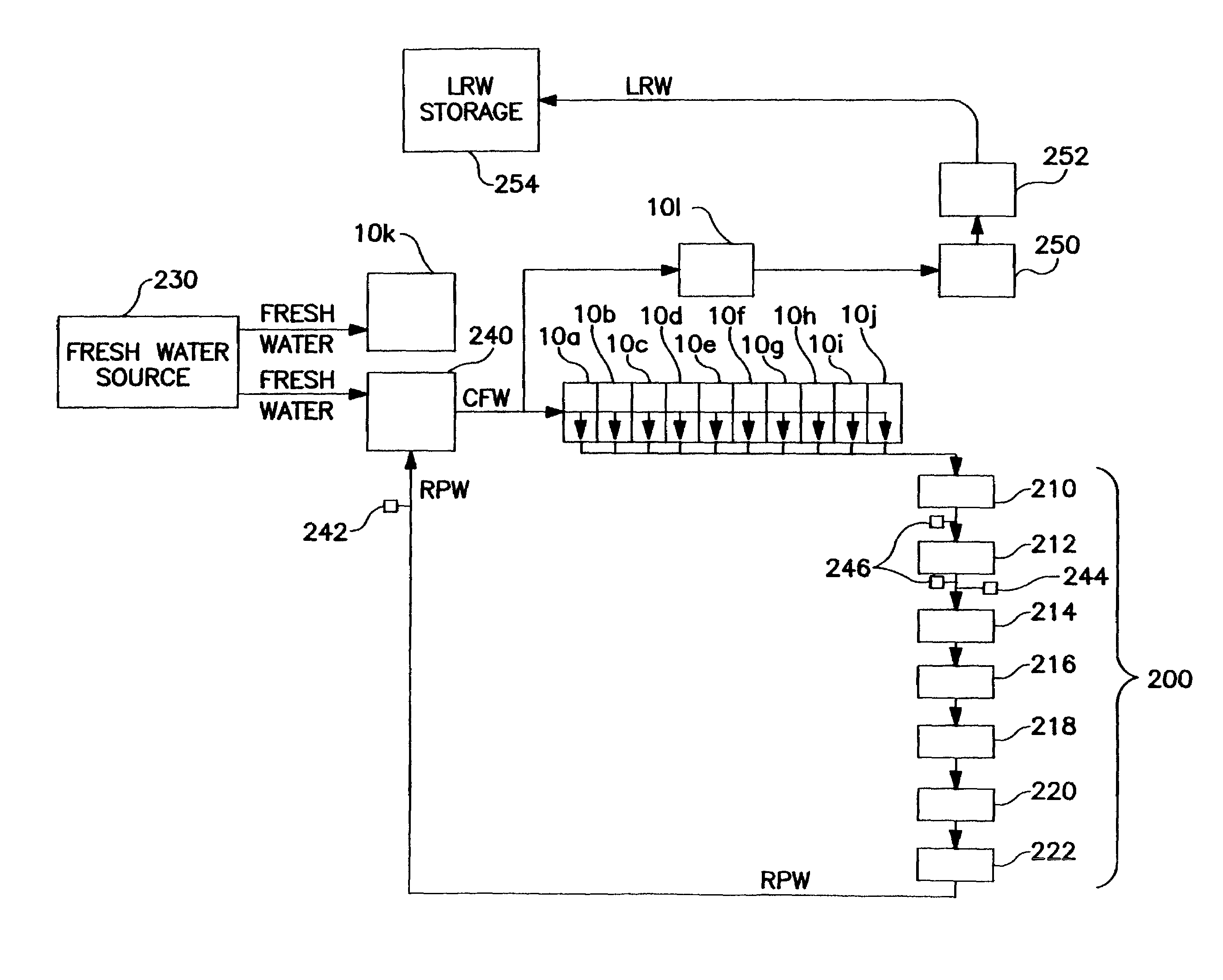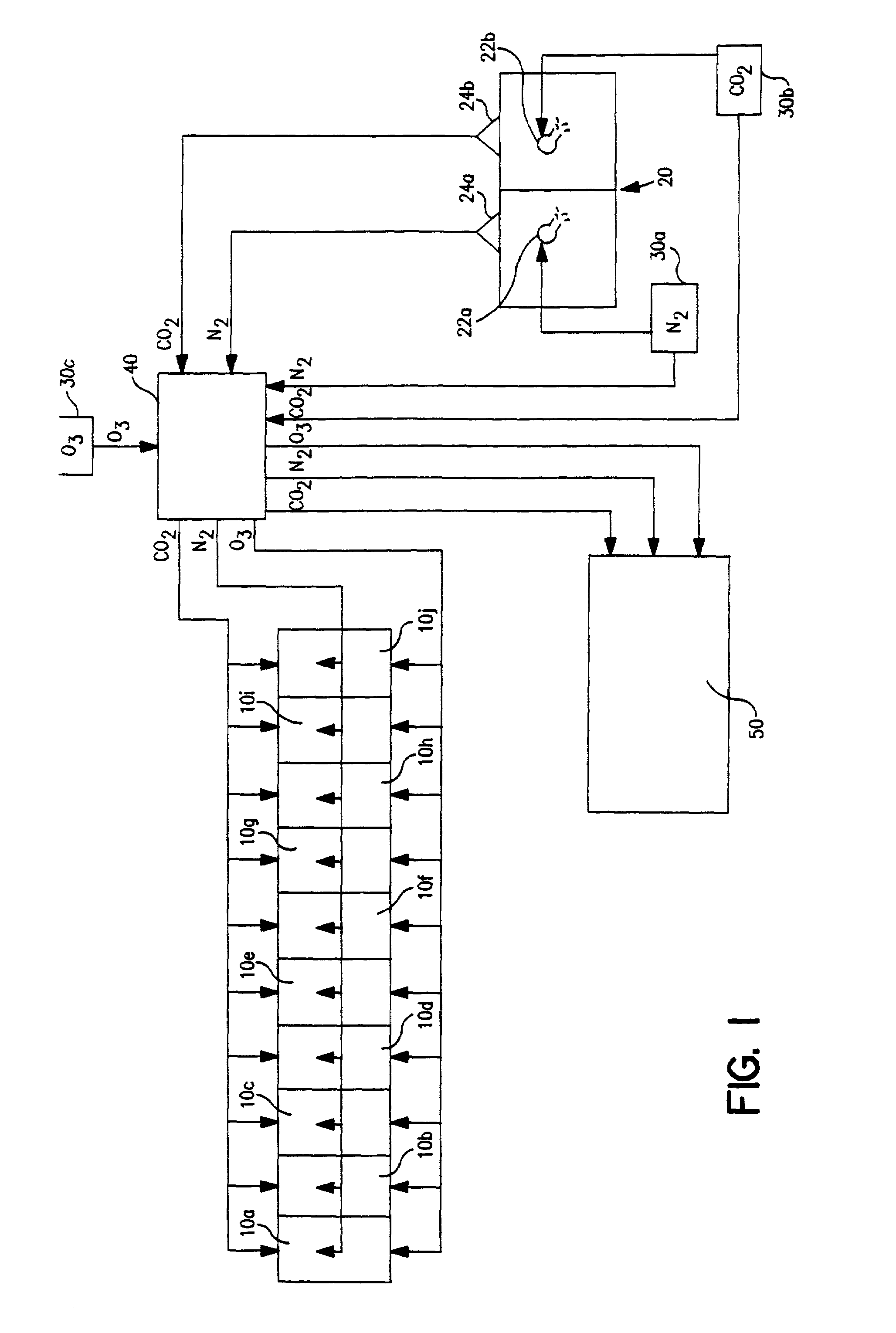Water reuse in food processing
a food processing and water reuse technology, applied in poultry processing, multi-stage water/sewage treatment, fruits/vegetable preservation by freezing/cooling, etc., can solve the problems of significant growth of microorganisms, lack of adequate equipment and controls to reduce the growth of potentially harmful microorganisms, and poor cleaning of both animals and processing machines. , to achieve the effect of minimizing the growth of microorganisms
- Summary
- Abstract
- Description
- Claims
- Application Information
AI Technical Summary
Benefits of technology
Problems solved by technology
Method used
Image
Examples
Embodiment Construction
[0043]Reference will now be made in detail to the present preferred embodiments of the invention, examples of which are illustrated in the accompanying drawings.
[0044]In accordance with the invention, a system is provided for processing live animals into food. As embodied in FIG. 1, the system includes a plurality of processing areas 10a–10j in which individual tasks are performed during food processing. Each of the processing areas 10a–10j is a room or chamber containing equipment associated with processing animals into food, and adjacent pairs of the processing areas 10a–10j are interconnected so that the processing areas 10a–10j form an elongated tunnel structure.
[0045]As described in more detail below, live animals are washed in the processing area 10a and slaughtered in the processing area 10b. The resulting carcasses are then conveyed through processing areas 10c–10j where they are processed into food. In at least some of the processing areas 10a–10j, the interior atmosphere, ...
PUM
 Login to View More
Login to View More Abstract
Description
Claims
Application Information
 Login to View More
Login to View More - R&D
- Intellectual Property
- Life Sciences
- Materials
- Tech Scout
- Unparalleled Data Quality
- Higher Quality Content
- 60% Fewer Hallucinations
Browse by: Latest US Patents, China's latest patents, Technical Efficacy Thesaurus, Application Domain, Technology Topic, Popular Technical Reports.
© 2025 PatSnap. All rights reserved.Legal|Privacy policy|Modern Slavery Act Transparency Statement|Sitemap|About US| Contact US: help@patsnap.com



